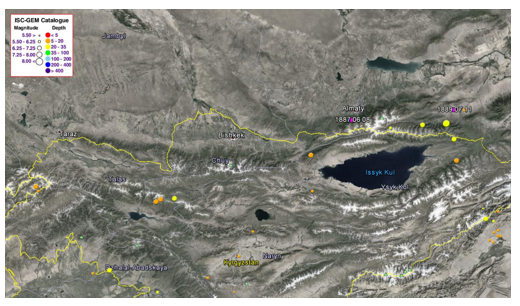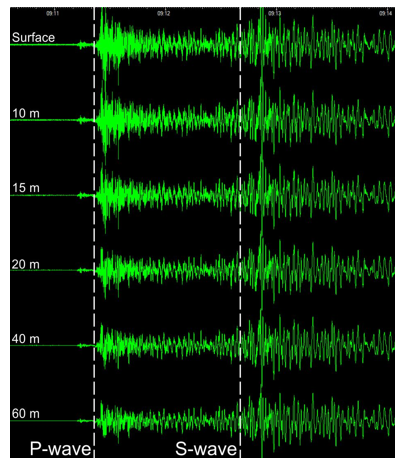Borehole array improves estimation of shaking hazard caused by future earthquakes in Central Asia
The city of Bishkek in Kyrgyzstan has a very high potential to experience widespread damage during a future large earthquake. Researchers have aimed to better understand how the shallow geology beneath the city may affect shaking during a large earthquake. With the German Research Centre for Geosciences (GFZ), Güralp installed a string of borehole strong motion accelerometers beneath the city. Seismic waveforms from local and regional moderate earthquakes have helped researchers to understand the degree of amplification caused by Bishkek’s location in a shallow alluvial basin.
Seismic hazard in central Asia
Seismic hazard in central Asia
Seismic hazard in central Asia
As shown by historical seismicity, Central Asia has a large potential for large earthquakes due to the collision between the Indian and Eurasian tectonic plates. The capital city of Kyrgyzstan, Bishkek, is located in the Chu basin, which is bounded by the Kyrgyz Range and the Issyk-Ata-Fault to the south. The city is built on a 250 m thick layer of quaternary alluvial sediments, which may amplify shaking during a large earthquake. These effects are exacerbated by the type of buildings in the city, which perform badly during strong ground shaking. As a result, significant human and economic loss can be expected during a future large earthquake. However, a lack of strong motion data in the area means that seismic hazard estimations for future earthquakes is poorly constrained.
To better understand seismic hazard in the region, the German Research Centre for Geosciences (GFZ) and the Central Asian Institute of Applied Geosciences (CAIAG) established a strong motion network in Central Asia. As part of this network, researchers required a vertical array of strong motion of seismometers to better constrain seismic amplification inside the basin.es.
To better understand seismic hazard in the region, the German Research Centre for Geosciences (GFZ) and the Central Asian Institute of Applied Geosciences (CAIAG) established a strong motion network in Central Asia. As part of this network, researchers required a vertical array of strong motion of seismometers to better constrain seismic amplification inside the basin.es.
Historical and recent (1900-present) seismicity in the Bishkek region. Earthquake locations are from the ISC-GEM catalogue.
Güralp solution
In 2012, Güralp supplied and installed a 150 m deep borehole string in Bishkek. The borehole is equipped with a 5T strong motion accelerometer at the surface, and a string of five 5TB borehole accelerometers at depths of 10, 15, 20, 40 and 60 m. The data from the borehole string is digitised by two DM24 digitisers. Each instrument was fixed in place using individual hole locks. The data are stored locally and transmitted in real-time via the internet to GFZ and CAIAG.
Compared to surface instruments, borehole sensors must withstand harsh environments. Güralp have developed a state-of-the-art and robust range of analogue and digital borehole instrument for seismic monitoring. Borehole instruments also provide much higher signal to noise ratio than surface sensors, allowing much smaller amplitude seismic signals to be detected.
Compared to surface instruments, borehole sensors must withstand harsh environments. Güralp have developed a state-of-the-art and robust range of analogue and digital borehole instrument for seismic monitoring. Borehole instruments also provide much higher signal to noise ratio than surface sensors, allowing much smaller amplitude seismic signals to be detected.
Outcome
The array has offered the first opportunity to acquire digital strong motion data at different depths in this area of Central Asia. Data from the array has allowed researchers to quantify seismic wave amplification at the near-surface. By using local and regional earthquakes, studies have identified the critical physical properties of the subsurface beneath Bishkek, such as S-wave velocity and attenuation. Also, the unique configuration of a downhole array located close to an instrumented building will spawn studies of the interactions between buildings and the underlying soil.
Recorded vertical waveforms from the Mw 7.7 Hindu Kush, Afghanistan earthquake showing amplification of the P-wave at shallow depths.




